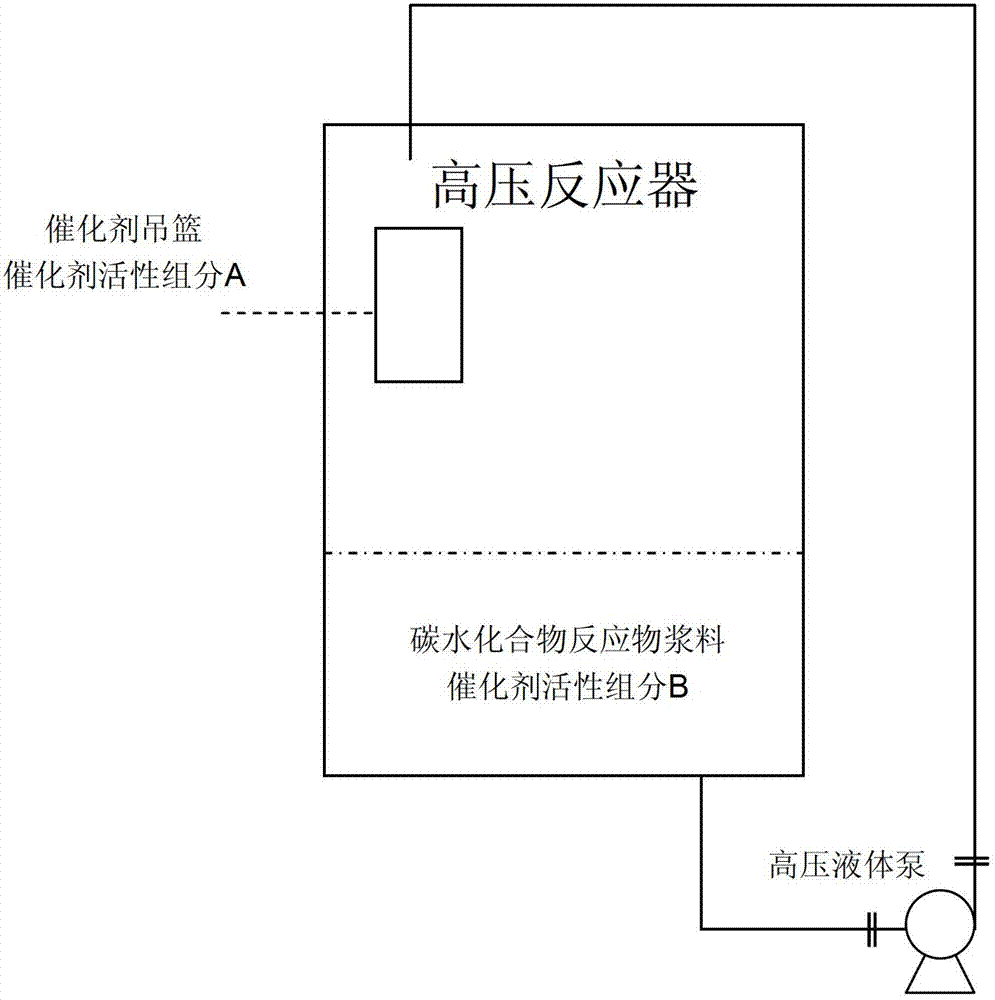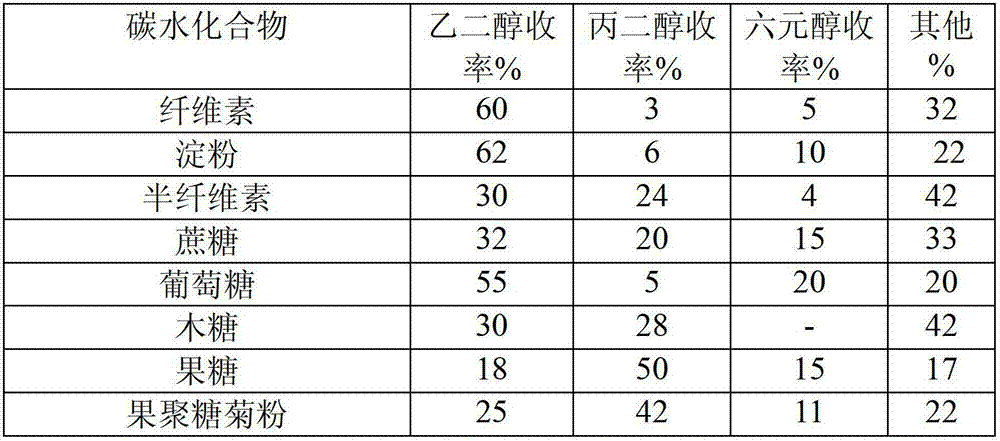Method for preparing low carbon polyol by internal circulating catalysis and conversion of carbohydrate
A carbohydrate and catalytic conversion technology, applied in the preparation of hydroxyl compounds, the preparation of organic compounds, chemical instruments and methods, etc., can solve the problems of decreased reaction selectivity, catalyst poisoning, affecting the yield of target products and catalyst life, etc. Life, avoid direct contact, improve the effect of target product yield
- Summary
- Abstract
- Description
- Claims
- Application Information
AI Technical Summary
Problems solved by technology
Method used
Image
Examples
Embodiment 1
[0034] Metal catalyst Ni / AC,Ni / TiO 2 , the preparation of Pt / AC, Ru / AC: impregnated activated carbon support with nickel nitrate, chloroplatinic acid, and ruthenium trichloride aqueous solution respectively, after drying at 120°C for 12h, and reducing it in a hydrogen atmosphere at 450°C for 1h to obtain Catalysts Ni / AC(50wt%Ni), Pt / AC(0.5wt%Pt), Ru / AC(5wt%Ru). Replace the activated carbon support with SiO 2 , the same method can prepare Ni / TiO 2 (15wt%Ni) catalyst.
Embodiment 2
[0036] References Angew.Chem.Int.Ed.2008,47,8510–8513, Preparation of Ni-W 2 C / AC catalyst: Make a mixed solution of ammonium metatungstate and nickel nitrate according to the weight ratio of tungsten / nickel of 6:1, wherein the mass concentration of ammonium metatungstate is 0.4g / ml. Then, the mixed solution was impregnated with activated carbon support (AC). After oven drying at 120°C for 12 h, the catalyst precursor was placed in H 2 A temperature-programmed carbothermal reaction was carried out in the atmosphere. The specific reaction process was: 1.0g of the precursor was heated from room temperature to 400°C in a quartz reaction tube for 1h, then raised to 700°C at 1°C / min and kept for 1h for carbonization. The hydrogen flow rate was 60ml / min. Obtain Ni-W with 30wt% tungsten loading and 5wt% nickel loading 2 C / AC catalyst, expressed as Ni-W 2 C / AC (5wt%Ni-30wt%W 2 C).
Embodiment 3
[0038] Catalytic conversion experiment: 10.0g cellulose, 0.1g Ru / AC (5wt%Ru) catalyst, 0.03g tungstic acid catalyst and 100ml water were added to a 200ml reactor, 0.2g Ru / AC (5wt%Ru) catalyst was added to In the filter hanging basket, after replacing the gas with hydrogen for three times, fill it with hydrogen to 5MPa, raise the temperature to 240°C, and reflux the reaction solution through a high-pressure liquid pump at a flow rate of 10ml / min. The reaction time is 60min. After the reaction, cool down to room temperature, take the centrifuged supernatant, separate it on a high-performance liquid chromatography calcium-type ion-exchange column and detect it with a differential refraction detector. In the product yield, only the target products ethylene glycol, propylene glycol and hexahydric alcohols (including sorbitol and mannitol) are calculated, and other liquid products include butylene glycol, ethanol, unknown components, and gas products (CO 2 , CH 4 , C 2 h 6 etc.) ...
PUM
 Login to View More
Login to View More Abstract
Description
Claims
Application Information
 Login to View More
Login to View More - R&D
- Intellectual Property
- Life Sciences
- Materials
- Tech Scout
- Unparalleled Data Quality
- Higher Quality Content
- 60% Fewer Hallucinations
Browse by: Latest US Patents, China's latest patents, Technical Efficacy Thesaurus, Application Domain, Technology Topic, Popular Technical Reports.
© 2025 PatSnap. All rights reserved.Legal|Privacy policy|Modern Slavery Act Transparency Statement|Sitemap|About US| Contact US: help@patsnap.com



